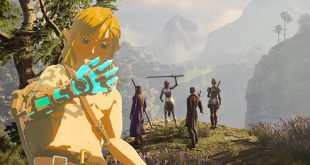A year on from E3 2013 and perhaps the most surprising thing is that everything has panned out just as you might have expected.
Admittedly, the extent of PS4’s sales lead is perhaps greater than you’d have thought, as is the extent of Microsoft’s policy U-turns. And arguably the extent to which Nintendo has failed to ignite sales of the Wii U.
So really what we’ve ended up with is an exaggerated narrative of what you may have predicted once the dust had settled on last year’s E3 showcase.
But what will each platform holder be looking to achieve this time out? MCV takes a look at each in turn and dissects exactly what E3 2014 will need to achieve for Sony, Microsoft and Nintendo.
SITREP: In a way, being in the best position makes Sony’s job the hardest when it takes to the E3 stage at 2am tomorrow morning.
It can’t possibly hope to emulate the rapturous reception afforded to Jack Tretton last year when the exec laid on one of the most remarkable E3 smackdowns ever over the course of an unforgettable three minutes.
In the year that has followed Sony has sold over 7m PS4s across the world. Microsoft will only say that it has shipped 5m Xbox Ones, with actual sales perhaps not yet reaching 4m units.
None of which should leave Sony feeling contented. Not if it has any sense, anyhow. PS3 went on to match the global sales of Xbox One but that came after a period of at least two years throughout which Sony’s machine was a poor rival to Microsoft’s.
It shipped without rumble in its controllers, without anything to rival Xbox’s popular Achievements system, with significant UI and usability issues and with an absurd RRP. Yet Sony was still able to turn it around. You’d be an idiot to think Microsoft isn’t capable of the same.
But as of right now, Sony has the front foot. It couldn’t a year ago of even dreamed things would go so well, or that it could so successfully court the affections of the hardcore. Ahead of it lays the most incredible opportunity – and one that most definitely cannot be missed.
OBJECTIVES: The situation may be favourable for Sony right now but Microsoft has done a great job of updating the Xbox One since November. Sony needs to step up its software development, adding some basic usability tweaks to its accomplishments in video streaming to make sure it doesn’t fall behind Microsoft.
But its most pressing issue remains software. PS4 seems to have become to go-to console for indie titles but and increasing number of those who have paid out 350 for the console are demanding more in the way of triple-A. Sony needs a decent selection of exclusive triple-A titles, and they need to be out within the year. Before Christmas, ideally.
Indie games are great but it cannot afford for Microsoft to cement a reputation as the better place for blockbuster gaming. Sony has always been good at exclusive IP, but it can often be slow, too. Demon Souls II, LittleBigPlanet 3, Gran Turismo 6, a new WipeOut and of course an FPS of some sort would be a good start, but new IP is crucial. It can’t start and end with The Order: 1886.
Fortunately, MCV has been led to believe that Sony won’t fall short on this target tonight.
SITREP: You can be sure that nightmares of E3 2013 still haunt the dreams of many a current and former Microsoft exec. Rarely has a company been so thoroughly dismantled by its opposition and faced such a horrendous backlash from its target userbase.
Last month’s admittance – albeit not in those words – that its Kinect experiment had failed marked the moment when Microsoft finally realised that it is not the master of the consumer agenda.
Such was the success of Xbox 360 that, as Sony once did before it, Microsoft made the mistake when developing Xbox One of believing that it had the power to dictate the future of living room console gaming.
Don’t be too furious about this arrogance, either. Apple has prevailed despite many a consumer-damaging strategy and even parts of the press were willing to dismiss the NeoGAF meltdown as meaningless.
What we have learned in this last year is that it most certainly was not.
Although in isolation Xbox One’s (still officially unconfirmed) sales numbers seem decent, such things cannot be considered in isolation. They exist in the minds of shareholders only in relation to Microsoft’s rivals, and there’s no escaping the fact that PS4 has so far trounced it.
But while Microsoft can be faulted for the decisions that led up to E3 2013, it’s hard to fault it for its behaviour since.
The company has worked tirelessly to tailor the console according to feedback. Its previous willingness to ignore consumer feedback has been replaced with a judicious commitment to serving it. And not just in terms of ditching Kinect and lowering the price – several significant UI and functionality changes mean Xbox One is a far better machine for the core gamer now than it was in November.
What’s less easy for Microsoft to tackle, however, is the power discrepancy that exists between Xbox One and PS4. As long as Sony’s machine continues to offer better technical versions of multiformat titles, Xbox One will continue to struggle unless Microsoft can muster up a sufficient number of appealing exclusives and/or additional functionality that consumers find genuinely beneficial.
OBJECTIVES: Despite its exhaustive efforts over the last year, Microsoft continues to lose the PR battle amongst the vocal hardcore. The narrative has been set and it will have to continue working very hard if it hopes to reverse this.
Undoubtedly the single biggest tool in its arsenal here are exclusive games. Halo 5, Crackdown 3, Quantum Break, Sunset Overdrive and Fable Legends (and arguably Project Spark) is a decent platter but Microsoft will need to add to this if it wishes to win back the affections of those who used to hold Xbox 360 so dear.
Much of Microsoft’s battle, however, will be happening behind the scenes. You can be sure the company is working furiously on its Xbox One SDK to try and eek every single bit of performance out of its console. Stemming the tide of sub-1080p releases would certainly eradicate a fair few damaging headlines.
SITREP: Where do you even begin with Nintendo?
The last 12 months have been poor beyond anything Nintendo could have dared imagine. The Wii U of course fell short of the platform holder’s ridiculous sales targets but even more worrying is the fact that even the once mighty 3DS also failed to hit targets.
Can Wii U be saved? Fans (of which there are many if forums, comments sections and the replies column of Twitter users who dare to criticise the company are to be believed) will point to the strong sales of Mario Kart 8.
Critics will point out that why the game doubled weekly Wii U sales in Japan, it only added 10,000 units. And yes, the racer boosted Wii U sales 666 per cent in the UK. But that was from a sickeningly low starting point. And sales of the game in its second week? Down 75 per cent and merely a few hundred ahead of Square Enix’s new non-IP Murdered: Soul Suspect. And Wii U hardware sales? Don’t ask.
Despite what diehards will tell you, Super Smash Bros doesn’t have a hope in hell of rejuvenating the console’s fortunes to the extent Mario Kart 8 could. Even the majestic Super Mario 3D World did nothing for the machine. You can be sure Bayonetta 2 will be excellent and it will likely have a great attach ratio, but will it sell hardware? The short answer – no.
You’d also do well to maintain an air of scepticism regarding the company’s NFC figure plans. Yes, Nintendo fans will more than likely lap up plastic figurines of their beloved characters. But can you imagine a single non Wii U owner buying a machine on the back of them? No. It’s a prime example of preaching to the converted.
Wii U could yet prosper – a significant price cut, a decent digital platform (perhaps with a subscription service offering unlimited access to Nintendo’s rich back catalogue?) and, most of all, a decent software line-up could yet drag the machine into a position of respectability.
But will Nintendo do any of those things? Can it? It’s hard to imagine Nintendo ploughing anything amounting to decent resource into a machine that looks so certain to fade.
What’s more believable is a significant financial push behind Iwata’s still mysterious Quality of Life initiative. Financially this could be a sensible move for Nintendo but all but the most dedicated brand devotee will struggle to maintain enthusiasm for a company that, while staying loyal to its traditional heritage, would be effectively abandoning those whom have loved it most over the last two decades.
OBJECTIVES: In a word, Zelda.
Whether Link can or cannot have a meaningful impact on Wii U hardware sales, the goodwill impact along of a proper, new, HD Zelda game will see Nintendo hailed from the rafters for a good few months.
But beyond that? Nintendo could still have a couple of announcements up its sleeve for its E3 Direct tomorrow. Mario Maker is of no commercial importance beyond appeasing the dedicated few. A new Metroid would go down well, certainly. And a concrete release date for Bayonetta 2 would help.
And that’s the problem. This E3, as with every other in recent years, will simply come down to a tally of which old games Nintendo will choose to resurrect this time. It’s becoming increasingly hard to believe that such a cycle can sustain Nintendo in the long-term.
The best gift Nintendo could present this year is some actual new, original IP that demonstrates why critics continue to hail Nintendo as one of the best devs in the business.

 MCV/DEVELOP News, events, research and jobs from the games industry
MCV/DEVELOP News, events, research and jobs from the games industry



